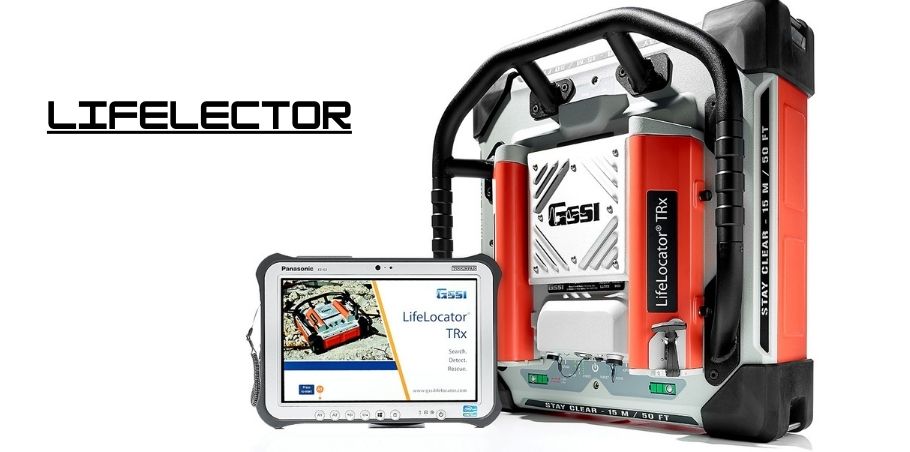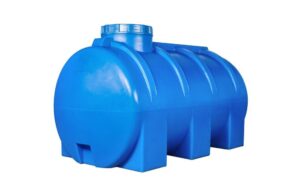Lifelector: The Future of Search and Rescue Technology
Lifelector is a high-tech, portable device designed to locate and detect human presence through dense rubble, concrete, and other types of debris in disaster zones. Developed with sophisticated technology, Lifelector uses a combination of seismic, radar, and infrared sensors to identify the location and movement of individuals trapped or immobilized beneath collapsed structures.
Originally conceived as a tool for military and industrial use, Lifelector has since been adapted for civilian rescue operations. The device provides rescuers with precise information about the presence of people in hard-to-access areas, allowing for quicker and more efficient extraction efforts. With the Lifelector device, rescue teams can minimize the time spent combing through hazardous areas, which translates into higher survival rates for disaster victims.
How Does Lifelector Work?
Lifelector combines various sensors and detection techniques, primarily using radar technology, which is capable of penetrating surfaces like rubble and concrete. Here’s a look at the key technologies and methods that make Lifelector effective:
-
Radar Technology
Radar waves can penetrate through non-metallic obstacles and are sensitive to the minute movements created by the human body, such as breathing or heartbeat. The Lifelector device emits radar waves that bounce back upon hitting an object or human body. The reflected waves are then analyzed to identify any movement or living presence beneath the debris.
-
Seismic Sensors
Lifelector is equipped with seismic sensors that detect vibrations caused by movement. In situations where radar waves are limited by the density of debris, seismic sensors serve as an alternative by picking up vibrations that may indicate someone moving, tapping, or trying to communicate from beneath the rubble.
-
Infrared Sensors
Infrared technology, which senses heat, helps Lifelector identify the body temperature of individuals. This feature is particularly helpful in cases where radar waves or seismic sensors may not be as effective, such as in detecting non-moving victims.
-
Data Processing and Visualization
Lifelector’s sensors transmit data to an interface, typically a handheld or laptop device, where it is processed and displayed for rescuers. This real-time visualization enables rescue teams to pinpoint where victims are trapped and assess their condition.
Key Features of Lifelector
Lifelector is equipped with features designed for accuracy, portability, and usability in chaotic environments. Here are some of the standout features that make Lifelector a valuable asset for emergency responders:
-
High Sensitivity
Lifelector’s radar can detect even the slightest movements, such as breathing or heartbeat, making it ideal for locating victims who may be unable to move or call for help.
-
Portable and Lightweight
The compact design of Lifelector ensures it can be easily transported and deployed in remote, disaster-prone areas. Its portability is essential for rescue teams who need to quickly respond to multiple locations.
-
Real-Time Data Transmission
The device provides real-time feedback on detected movement, making it possible for rescuers to act immediately upon discovering a person’s presence.
-
User-Friendly Interface
Lifelector’s display system is designed to be intuitive, showing visual representations of detected movements, along with coordinates, to help rescue teams interpret information quickly and accurately.
-
Weather-Resistant Design
Built for challenging conditions, Lifelector can withstand extreme temperatures, humidity, and exposure to dust and water, which are typical in disaster sites.
Applications of Lifelector in Real-World Scenarios
Since its inception, Lifelector has been deployed in numerous disaster response situations, with impressive success rates in finding survivors under tough conditions. Below are some notable examples:
-
Earthquake Response
Lifelector has been instrumental in post-earthquake rescue missions worldwide. For example, during the 2021 Haiti earthquake, Lifelector devices were deployed to locate survivors trapped under concrete structures. By pinpointing the exact locations of survivors, rescuers were able to prioritize their efforts, ultimately saving lives.
-
Building Collapses
In urban areas, building collapses due to aging infrastructure, poor construction, or accidents pose significant risks. Lifelector has proven invaluable in these situations, such as the Surfside condo collapse in Miami in 2021. Rescuers used the device to scan through layers of debris, enhancing their ability to locate and retrieve trapped individuals.
-
Landslides
Landslides can result in large areas of soil and rock burying entire communities. Lifelector’s radar capabilities are ideal for penetrating soil layers and locating trapped individuals who may otherwise go unnoticed.
-
Industrial Accidents
Lifelector has also been used in situations involving industrial accidents, where workers may be trapped under debris from explosions or structural collapses. Its rapid response and effective detection capabilities allow safety personnel to locate and rescue workers promptly.
Advantages of Lifelector
The Lifelector device has several key advantages that make it a valuable addition to search-and-rescue teams. These advantages are not only about efficiency but also the likelihood of saving lives:
-
Reduced Rescue Time
Time is crucial in rescue missions, and Lifelector helps save valuable minutes and hours. By quickly identifying the location of victims, it enables rescuers to focus their efforts on specific spots, reducing overall rescue time.
-
Increased Survivor Rates
Detecting victims early increases their chances of survival, especially when they’re trapped under precarious structures that may collapse further. The device’s ability to detect even subtle movements, such as breathing, significantly improves survival rates.
-
Enhanced Team Safety
With Lifelector, rescue teams can gather information about the structural integrity of a collapsed area, reducing their risk of further injury or fatal accidents. The device acts as an “extra set of eyes,” allowing teams to approach the site with caution.
-
Resource Efficiency
With the information Lifelector provides, teams can allocate their resources more efficiently. The device minimizes the need for broad and unfocused search efforts, allowing teams to target their efforts and use fewer resources.
Challenges and Limitations of Lifelector
Despite its life-saving capabilities, Lifelector has certain limitations. Understanding these limitations is essential for continued improvement:
-
Signal Interference
In areas with dense and highly reinforced concrete, or with interference from surrounding structures, radar signals can weaken or become ineffective. As a result, detecting survivors in heavily fortified structures may require alternative techniques.
-
Limited Detection Range
While effective, the device has a limited detection range. Rescuers must be close enough to the disaster site, which can be dangerous in situations where structural instability or fires are a concern.
-
Dependence on Battery Life
Being a portable device, Lifelector depends on battery power. Extended rescue missions may require frequent battery replacements, which can be challenging in remote areas where charging facilities are scarce.
-
False Positives
Although rare, false positives can occur, where vibrations or movements unrelated to human presence are detected. This can lead to wasted time and effort in already chaotic environments, though advancements in filtering technology are helping to mitigate this issue.
Future Developments and Potential of Lifelector
Lifelector’s technology is still evolving, and ongoing research aims to address its limitations and enhance its functionality. Here are some areas where Lifelector could see significant advancements:
-
Improved Signal Penetration
Researchers are exploring ways to improve radar technology to penetrate even denser materials. Developing sensors that can overcome the limitations of dense concrete and metallic interference will increase Lifelector’s applicability.
-
Extended Battery Life
Future models may feature longer-lasting battery life or solar-powered capabilities, allowing rescue teams to use the device over extended periods without interruptions.
-
Integration with Drones
Integrating Lifelector with drones could enable aerial search and rescue operations, providing an overview of inaccessible areas and identifying potential survivors without putting rescuers at risk.
-
Enhanced AI-Driven Data Analysis
By incorporating AI into Lifelector’s data processing system, the device could automatically filter out irrelevant signals and increase the accuracy of its detections, reducing false positives and improving reliability.
-
Remote Monitoring
Advanced models may allow for remote operation and data monitoring, allowing off-site teams to coordinate rescue efforts and make decisions based on real-time information sent from Lifelector devices in the field.
FAQs about lifelector
What is Lifelector?
Lifelector is a device used to locate people trapped under debris in disaster zones, using radar, seismic, and infrared sensors.
How does Lifelector detect survivors?
It detects small movements like breathing and heartbeat through concrete and rubble using advanced radar and sensors.
Where is Lifelector used?
It’s used in disaster situations like earthquakes, building collapses, and landslides to locate trapped individuals.
How long does Lifelector last on a single charge?
Lifelector can run for several hours, with extra batteries typically available for extended missions.
What are Lifelector’s limitations?
It has a limited range and may experience interference in dense, metallic areas, which researchers are working to improve.
Conclusion: A Lifeline for Disaster Response
Lifelector represents a groundbreaking step in search-and-rescue technology, combining precision, portability, and advanced detection capabilities to locate victims quickly and effectively. As disaster response efforts continue to grow in scale and sophistication, tools like Lifelector are essential for providing faster, more efficient responses that save lives. Although the technology is still being refined, its impact on disaster-stricken areas worldwide demonstrates its immense value.
By continuing to innovate and improve Lifelector, we can further enhance its capacity to respond to crises, protect rescue personnel, and most importantly, give trapped individuals a chance to survive. As technology advances, Lifelector’s potential for even greater life-saving contributions to society becomes increasingly evident, promising a future where no person is left behind in a crisis.
If you gained new insights from this article, explore our blog, Gimkit, for more enlightening content.
Share this content:












Post Comment